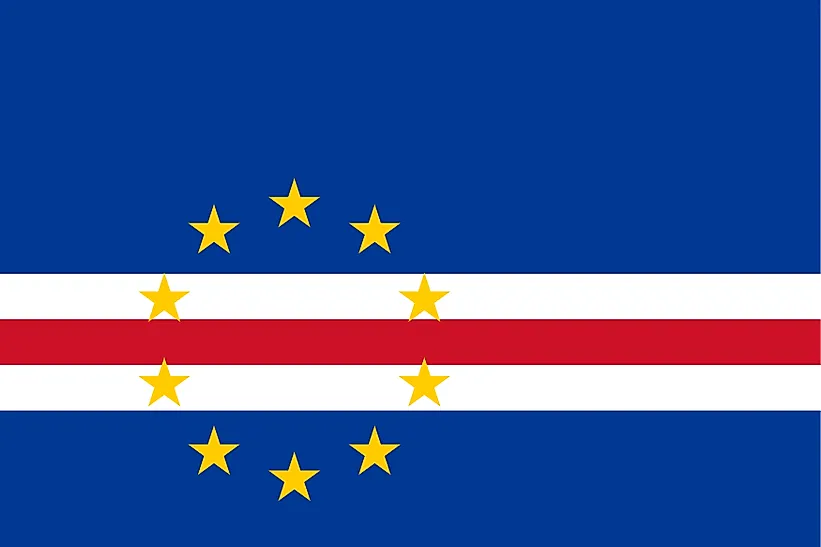
Cape Verde
| Continent | Africa |
| Capital | Praia |
| Population | 553,432 |
| GDP | $3.58 Billion |
| GDP per Capita | $6,700 |
| Dialing Code | +238 |
| ISO Code (2-letter) | CV |
| ISO Code (3-letter) | CPV |
Cape Verde Landscapes






About Cape Verde
Welcome to Cape Verde (Cabo Verde), an archipelago nation of ten volcanic islands scattered across the central Atlantic Ocean. With approximately 550,000 people occupying 4,033 square kilometers, this former Portuguese colony has transformed itself into a stable democracy and middle-income country. Located about 570 kilometers off the coast of West Africa, Cape Verde combines African, Portuguese, and Creole influences to create a unique cultural identity.
Geographic Features and Natural Beauty
Cape Verde’s geography is characterized by its volcanic origin, creating dramatic landscapes across its islands. The archipelago is divided into two groups: the Barlavento (windward) islands in the north and the Sotavento (leeward) islands in the south. Each island offers distinct features, from the sandy beaches of Sal and Boa Vista to the mountainous terrain of Santo Antão and Fogo.
Mount Fogo, an active volcano rising 2,829 meters above sea level, is the country’s highest point and last erupted in 2014. The island of Santiago, home to the capital city Praia, features both mountains and valleys suitable for agriculture.
Despite its location in the Sahel region, Cape Verde’s climate is milder than mainland Africa’s, moderated by the surrounding ocean. The country experiences a dry tropical climate with two seasons: a dry season and a brief rainy season.
Cultural Heritage and Traditions
Cape Verdean culture represents a vibrant fusion of African and Portuguese influences, most notably expressed through its music, particularly morna and coladeira. The legendary singer Cesária Évora brought international attention to Cape Verdean music with her soulful mornas.
The country’s Creole language (Kriolu) is a source of national pride and identity, while traditional festivals like Carnival and various saints’ day celebrations showcase the islands’ Catholic heritage combined with African traditions.
Cape Verdean cuisine reflects its maritime location and agricultural challenges, featuring fresh seafood, corn-based dishes like cachupa (the national dish), and tropical fruits. The country is also known for its grogue, a locally produced rum made from sugarcane.
Historical Journey
Cape Verde’s history begins with its discovery and colonization by Portuguese explorers in the 15th century. The islands became an important stopover point in the Atlantic slave trade and later served as a crucial resupply station for whaling ships and early transatlantic flights.
The country gained independence from Portugal in 1975 after an eleven-year war of independence fought primarily on mainland Guinea-Bissau. Since then, Cape Verde has developed into one of Africa’s most stable democracies, with peaceful transfers of power and strong institutions.
Modern Economic Landscape
Today’s Cape Verde has successfully transformed its economy from aid-dependency to lower-middle-income status. Tourism has become a major economic driver, particularly on the islands of Sal and Boa Vista, known for their pristine beaches and water sports opportunities.
The country has invested significantly in renewable energy, aiming to generate 50% of its electricity from renewable sources. Services, including tourism and transportation services, dominate the economy, while remittances from the large Cape Verdean diaspora contribute significantly to the GDP.
International Relations and Global Position
Cape Verde maintains active participation in international organizations and is often cited as a model of democratic governance in Africa. The country has strong ties with the European Union, Portugal, and other African nations, particularly through its membership in the Economic Community of West African States (ECOWAS).
Did You Know?
• Cape Verde has more people living abroad than within its borders?
• The country has one of Africa’s highest literacy rates at over 85%?
• Cape Verde is home to several endemic bird species, including the Raso Lark?
• The islands were uninhabited until discovered by Portuguese explorers in 1456?
Conclusion
Cape Verde stands as a remarkable example of how small island nations can overcome significant challenges to achieve stability and growth. From its volcanic peaks to its pristine beaches, from its vibrant music scene to its growing tourism industry, Cape Verde continues to develop while maintaining its unique cultural identity. As it faces challenges including climate change and water scarcity, Cape Verde remains committed to sustainable development and maintaining its position as a beacon of democracy in Africa.